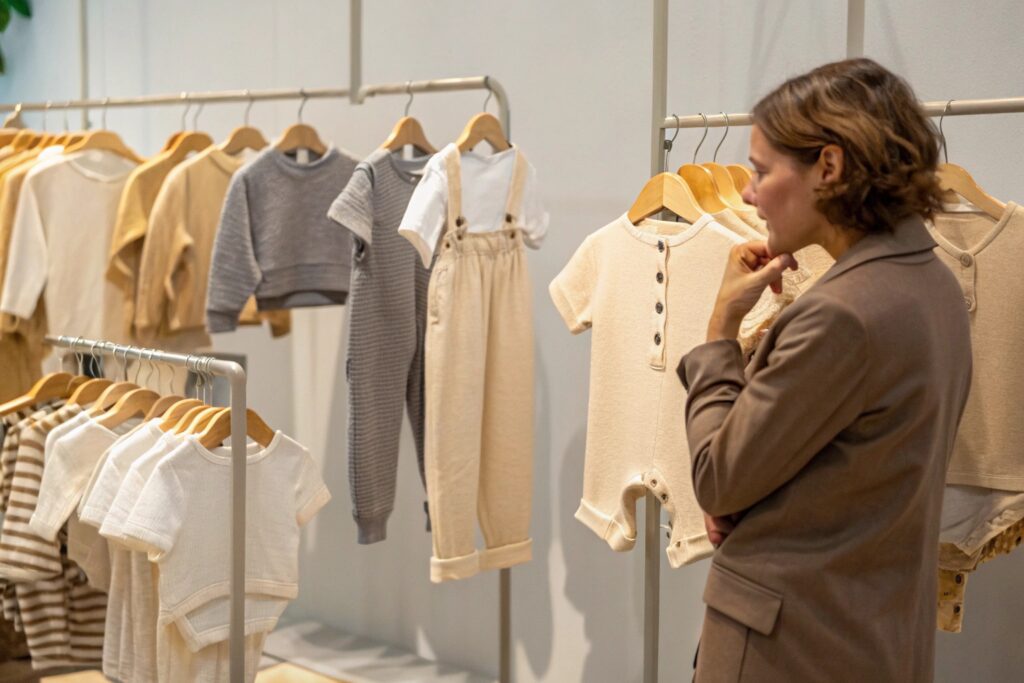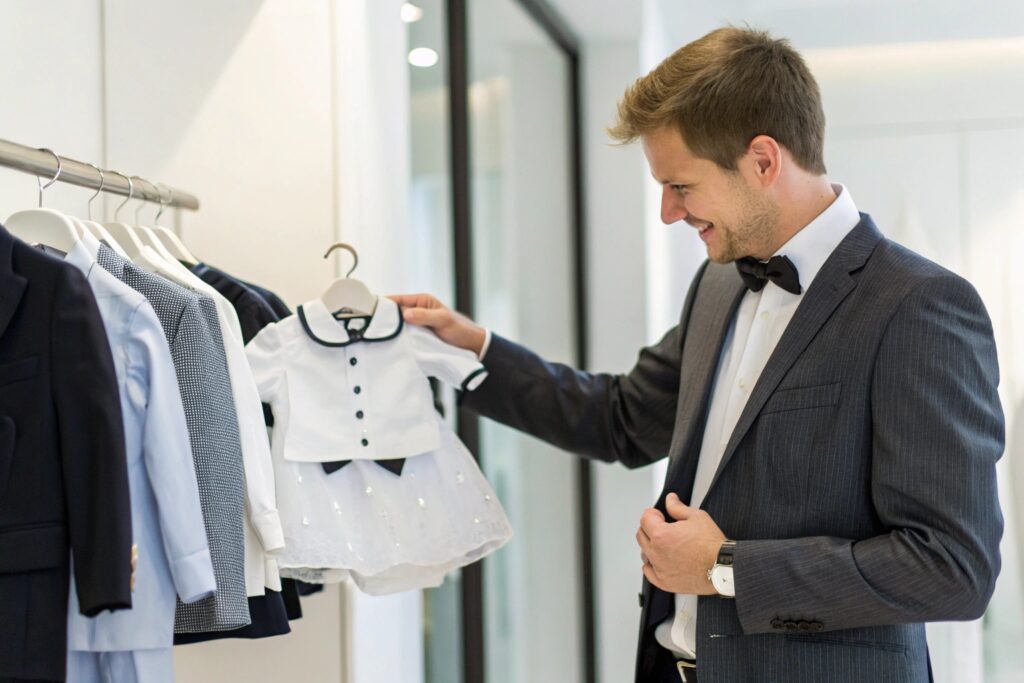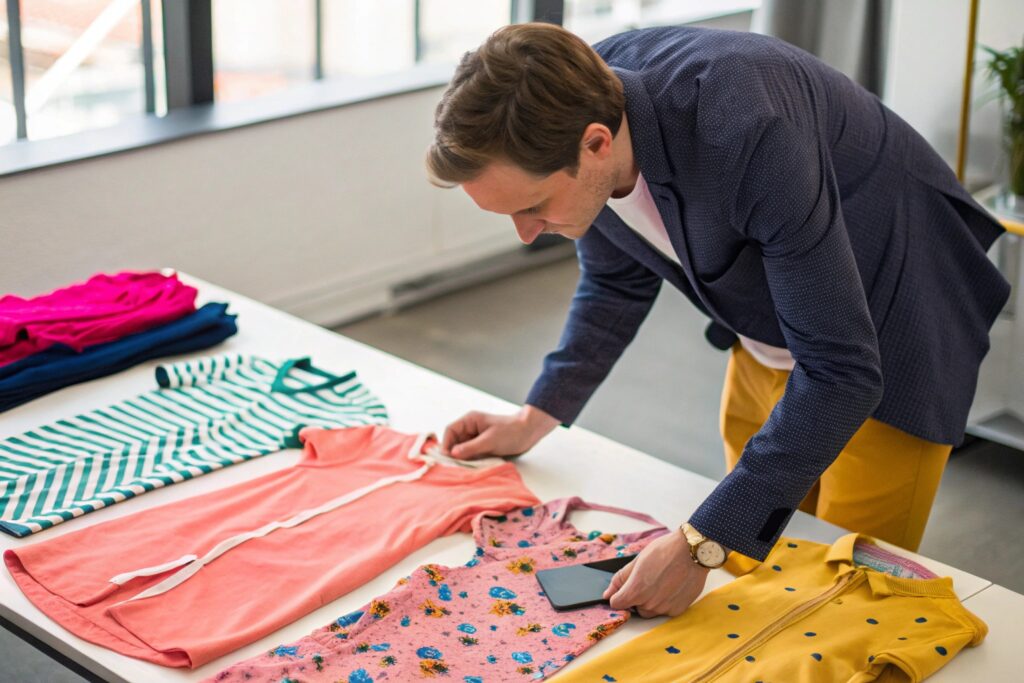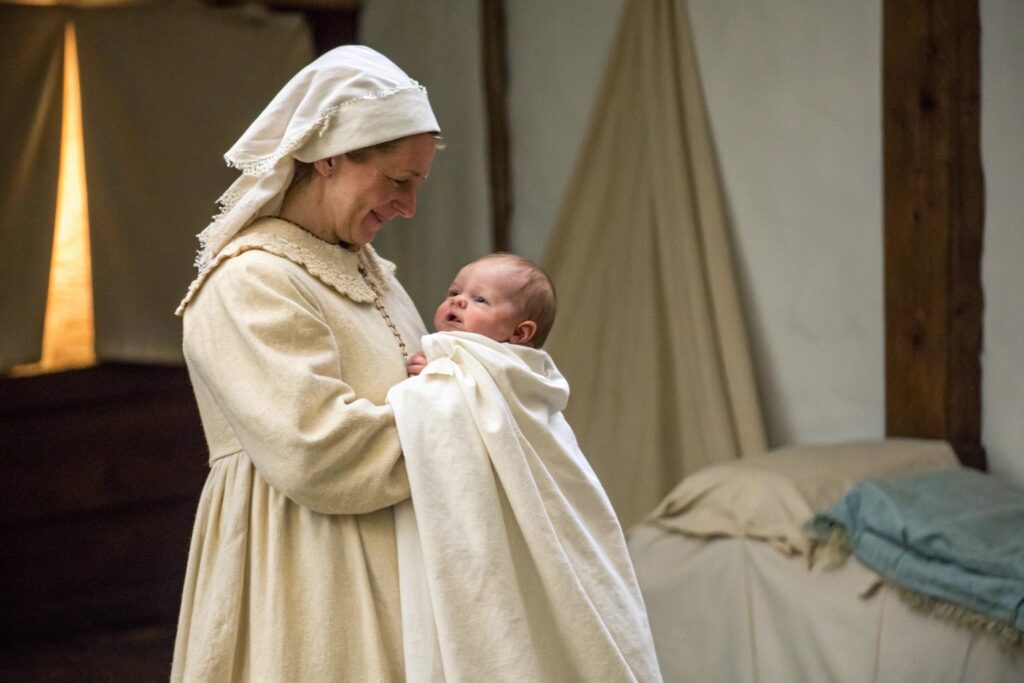Babywear has changed dramatically over the years. Gone are the days of plain, oversized hand-me-downs. Today, parents seek stylish, high-quality outfits for their little ones.
Yes, baby clothes have undergone a major fashion revolution. Modern babywear reflects adult fashion trends, prioritizes comfort, and embraces sustainability, making it both stylish and practical.
This article explores the latest baby fashion trends, their connection to adult styles, and why parents now demand fashionable yet functional clothing for their babies.
Trendy Baby Clothes Styles Popular in 2025?
Baby fashion is evolving rapidly. What are the top babywear trends in 2025?
In 2025, trendy baby clothes focus on sustainability, gender-neutral designs, and smart functionality. Organic fabrics, minimalist aesthetics, and coordinated sets are dominating the market.

What are the key baby fashion trends in 2025?
Based on market shifts and customer preferences, here are the biggest trends shaping baby fashion:
- Organic & Sustainable Fabrics – Parents prefer eco-friendly materials like organic cotton, bamboo, and TENCEL.
- Gender-Neutral Styles – Unisex colors and prints are replacing traditional pink and blue.
- Mini-Me Outfits – Matching outfits for babies and parents are a growing trend.
- Adaptive & Convertible Clothing – Babywear with adjustable features extends usability.
- Tech-Infused Babywear – Temperature-regulating fabrics and wearable monitors are on the rise.
| Trend | Why It’s Popular |
|---|---|
| Organic Cotton | Hypoallergenic, soft, and chemical-free |
| Neutral Tones | Timeless and suitable for all genders |
| Functional Rompers | Easy diaper changes and movement |
| Matching Sets | Parents love twinning with babies |
| Smart Fabrics | Helps regulate baby temperature |
I’ve seen firsthand how brands are shifting to sustainable yet stylish babywear to meet consumer demand.
Why do modern babywear brands prioritize comfort?
Baby clothes must balance fashion with functionality. Unlike adult fashion, babywear requires:
- Soft, breathable fabrics
- Easy fastenings (zippers, snaps)
- Safety-compliant designs (no loose buttons or choking hazards)
Parents want stylish outfits, but they won’t compromise on comfort. That’s why brands that blend practicality with aesthetic appeal are winning in the babywear market.
How Baby Fashion Reflects Adult Clothing Trends?
Ever noticed baby outfits that look just like adult fashion? That’s no coincidence.
Baby fashion mirrors adult clothing trends, adopting seasonal colors, fabric choices, and design elements. From mini streetwear to formalwear, the "mini-me" trend is bigger than ever.

What adult fashion trends influence babywear?
- Minimalist & Neutral Tones – Earthy shades, beige, and muted colors dominate both adult and baby fashion.
- Athleisure Babywear – Joggers, hoodies, and relaxed fits are common in kidswear.
- Luxury-Inspired Baby Fashion – Designer brands now create babywear lines featuring premium fabrics and detailing.
- Boho & Vintage Revival – Soft pastels, floral patterns, and knitted textures are trending in baby clothes.
- Monochrome & Capsule Wardrobes – Parents prefer mix-and-match baby sets similar to adult capsule wardrobes.
| Adult Fashion Trend | Babywear Adaptation |
|---|---|
| Oversized Silhouettes | Loose, comfy rompers and sweatpants |
| Monochrome Looks | Coordinated neutral babywear sets |
| Streetwear | Baby joggers, sneakers, and hoodies |
| Vintage Boho | Linen baby dresses and bloomers |
| Formalwear | Mini suits and dresses for occasions |
Why do brands invest in mini-me fashion?
Parents love dressing their babies in mini versions of their own outfits. This emotional connection drives sales, especially in high-end baby fashion.
At Fumao, we’ve helped brands create matching parent-baby collections, ensuring fabric softness and safety compliance while keeping up with fashion trends.
Why Modern Parents Want Stylish Babywear?
Years ago, baby fashion was all about function. Now, aesthetics play a huge role. But why?
Modern parents want stylish babywear because they see it as an extension of their personal style, value social media appeal, and demand higher quality than fast fashion options.

What has changed in baby clothing preferences?
- Social Media Influence – Parents share baby OOTD (outfit of the day) posts on Instagram and TikTok.
- Brand Consciousness – Designer and premium babywear brands have grown in popularity.
- Personalized & Custom Babywear – Embroidered names, birthdate prints, and unique touches are in demand.
- Sustainability Focus – Ethical sourcing and organic materials matter to new parents.
- Gift-Worthy Packaging – Baby clothes are often bought as gifts, so premium packaging enhances the appeal.
| Factor | How It Affects Babywear Trends |
|---|---|
| Social Media | Demand for photogenic outfits |
| Gifting Culture | Luxurious babywear sets gain traction |
| Sustainability | Organic, chemical-free fabrics preferred |
| Brand Prestige | Parents buy well-known babywear labels |
How do parents balance style and practicality?
While fashion matters, parents still need:
- Easy dressing solutions (zippered onesies, expandable waistbands)
- Machine-washable fabrics (low-maintenance care)
- Breathable materials (keeps babies comfortable in all seasons)
I always recommend babywear that combines aesthetics with usability, ensuring both style and function.
What did babies wear before their baby grows?
Before modern babywear, what did infants wear?
Before the invention of baby grows (one-piece rompers), babies wore long gowns, swaddling cloths, and layered garments. Early babywear focused on warmth and protection rather than convenience.

How has babywear evolved over time?
Here’s a historical timeline of baby clothing:
| Era | Common Babywear |
|---|---|
| 1700s-1800s | Long cotton gowns and bonnets |
| Early 1900s | Layered petticoats and wool knits |
| 1950s | Buttoned rompers and cotton dresses |
| 1970s | Introduction of zip-up baby grows |
| 2000s | Organic and gender-neutral babywear |
| 2020s | Smart fabrics and minimalist designs |
Why did baby grows revolutionize infant clothing?
Before one-piece baby grows became standard, dressing a baby involved multiple layers, buttons, and pins. The modern baby grow simplified dressing with:
- Zippers instead of buttons
- Snap closures for easy diaper changes
- Soft, stretchable fabrics for movement
This shift made babywear more practical, paving the way for today’s fashion-forward yet functional designs.
Conclusion
Baby clothes have come a long way, evolving from basic functional garments to fashionable, comfortable, and sustainable outfits. As trends continue to shift, babywear will likely mirror adult fashion even more while integrating eco-conscious materials and smart technology.










